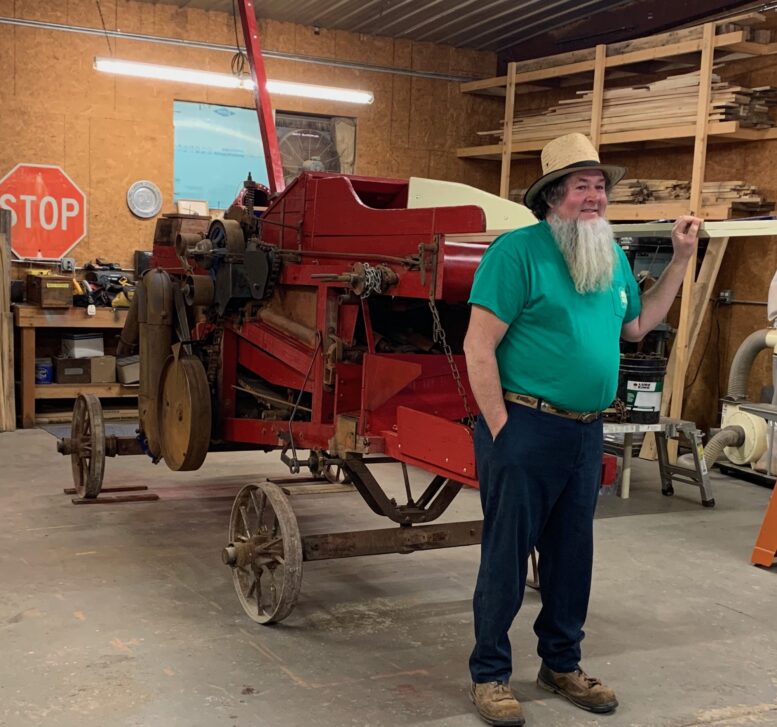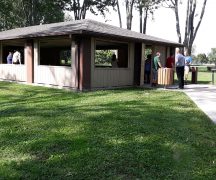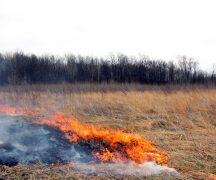By JULIE CARLE
BG Independent News
A 1920 McCormick-Deering corn husker-shredder had seen better days before Chris Dauer found it several years ago in Wood County.
The part-wood, part-metal vintage farm machine was discovered within about five miles of Carter Historic Farm, where Dauer is the historical agricultural specialist. A barn had fallen on top of it, and it hadn’t been used in many, many decades.
By spring 2026, the equipment will be restored and ready at the historic farm to show off its skills of separating corn and plant material, just like it was designed to do over 100 years ago, Dauer said during a presentation at the January Wood County Park District board meeting.
The piece of equipment has become somewhat of a passion project for Dauer, who joined the park district five years ago. He and other park district staff are collaborating to get the equipment up and running to be used as part of the farm’s historical interpretation of a working farm in the 1930s and ’40s.
The machine in its heyday was the predecessor to today’s combines. It didn’t harvest the corn in the field but instead was used by farmers to separate corn from the stalks and plant matter once the corn dried.
Farmers would cut and bundle the corn into corn shocks that look like what is often used in fall or Halloween displays, he explained. The shocks were left in the fields over the winter to dry. By about March, the corn would be dry enough to be separated in the machine.
Powered by a tractor or steam engine, the corn equipment’s pulleys and belts moved the material through the equipment. The stalks and fodder would be sent into the hay mow where it could then be used for animal bedding below. The corn would be shelled and moved through the equipment and dumped into a wagon for storage.
“They were very resourceful in their day, not wasting any of the corn,” he said.
The wood being used to refurbish the wooden part of the equipment comes from fallen trees in the district’s park. “It’s a win-win for us,” he said. The downed trees are cleared but then used internally. District operations staff are helping by cutting and preparing the wood that Dauer is using.
“You don’t walk into Home Depot and get white oak like this,” he said. “We are being smart and using what we have.”
These machines “were a monumental piece of equipment” in their day. They paid for people’s farms and made life on farms a lot easier for several decades, Dauer said. Because the equipment cost about $900, which was a lot of money back then, farmers often would share the equipment among neighbors and relatives.
Before the husker-shredders were available, the work would have been done by hand. “It was so dangerous and labor intensive,” he said.
Dauer believes there are less than 50 McCormick-Deering corn huskers from the 1920s still around. The company, which eventually became International Harvester, stopped making the husker-shredders by the mid-1920s, though farmers still used them into the 1930s and ’40s.
“I wish people would respect the (old) equipment for what it was in the time period,” he said. “They deserve more respect; they were the only game in town at the time.”
Thanks to Dauer and the park district staff, the vintage equipment, which has never left Wood County in more than 100 years, will live on as another visible reminder to the public of early 20th-century farm life in Wood County.




